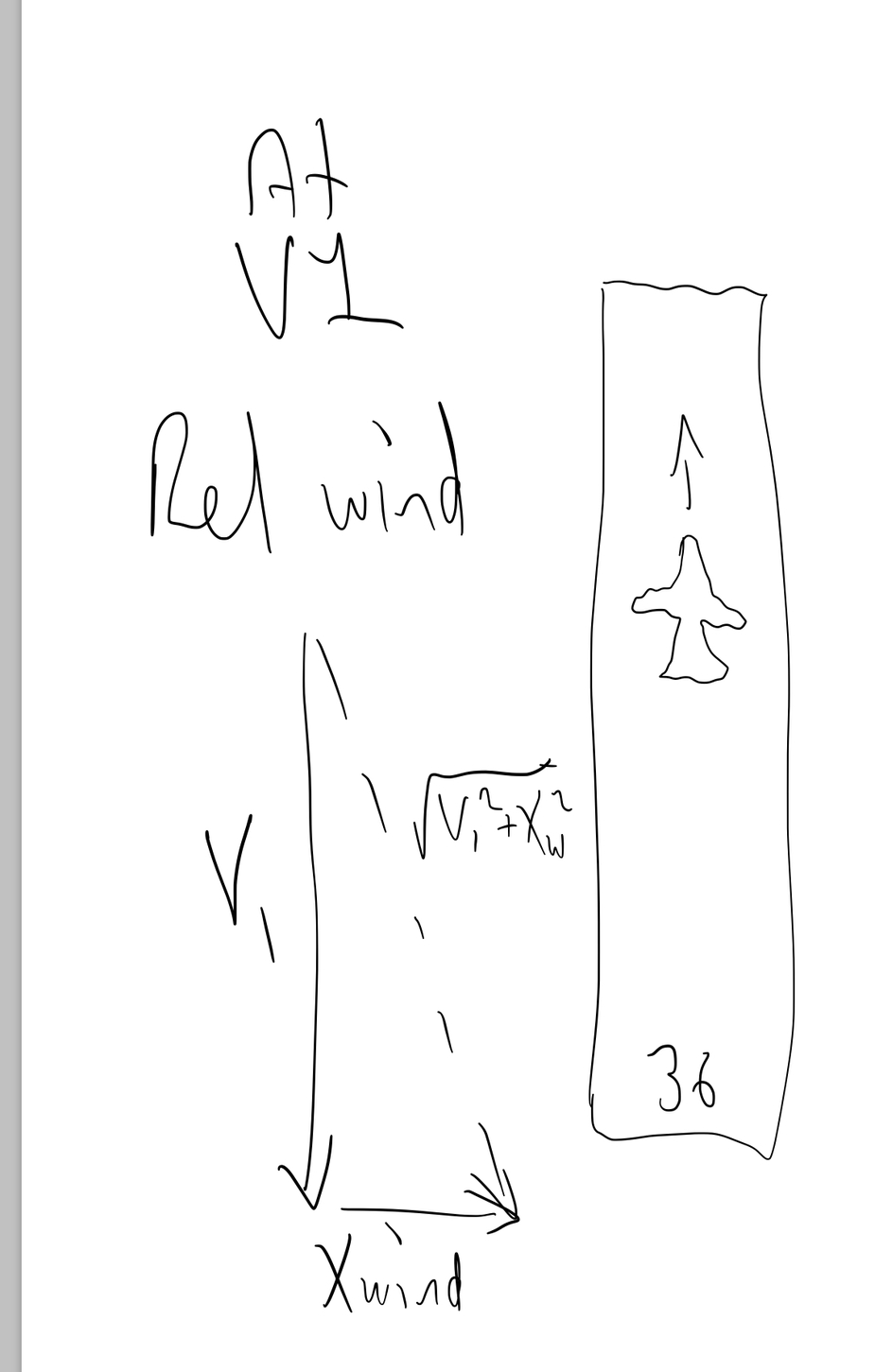I think what you say is true in the air where you have to turn into wind to eliminate drift (and thus the relative angles gets to less than 90 degrees) but not on the runway going perfectly perpendicular.
Yes, the magnitude of the relative wind vector is higher as a result of the cross-wind….
But that does not support Peter’s understanding that the headwind component will increase…
As you say, less runway would be required only if there was a headwind component to the wind blowing….(because it is the longitudinal component that generates lift)…
And what I am saying is in fact, because of the drag caused by crossed controls, more runway is required for a pure cross wind than on a still wind day..
Peter wrote:
I’ve just read (on a UK site) that somebody cancelled a flight because the runway was not long enough at the temperature and weight (fair enough) but he added there was no wind; only a crosswind. That is surely wrong… flying in a crosswind creates a headwind and the faster you go the more headwind it makes for you.
I think that was prudent, for similar reasons that many certification regimes don’t fully credit a headwind.
I think you could easily find yourself with competing forces that increase or decrease the distance to get over the screen height, or what ever is the limiting factor.
- You could encounter adverse wind shear, as the wind often changes direction as its speed increases.
- With a strong tailwind and certain terrain you might find yourself with a tailwind at both ends of the runway.
- The take off roll would theoretically be longer as the extra drag created by the crosswind, either by the airframe, undercarriage or both, or the desire to leave the ground in a positive fashion.
- Once the aircraft leaves the ground as the crosswind is an unbalanced force it will cause the aircraft to accelerate, either just laterally initially which will result in a yaw which is more drag, but eventually this “should” result in an increase in airspeed or hopefully the pilot is awake and controls the aircraft such that centreline is maintained and the aircraft should have an increase in airspeed and lower groundspeed, relative to the no wind scenario.
Hopefully the pilot applied a sensible “factor” to the take-off charts, or made sure they already included one.
Ok, since all commentators (inexplicably to me) appear to agree that a 90deg crosswind is better than zero wind for takeoff, how much angle aft of a crosswind (ie 90deg + what angle) before the takeoff distance is negatively affected?
You were correct a true 90 degree crosswind does not improve takeoff performance unless you can takeoff across the runway. In theory some warbirds which require anti torque aileron might have an infinitesimal gain from a crosswind from the right (assuming a right turning engine), due to reduced aileron drag on the start of the ground run.
AnthonyQ for avoidance of doubt I fully agree with you! I don’t have my iPad with me but otherwise would be happy to draw some vectors for those who prefer to visualise (but someone who like vectors will probably have gotten this right too)
AnthonyQ wrote:
Ok, since all commentators (inexplicably to me) appear to agree that a 90deg crosswind is better than zero wind for takeoff, how much angle aft of a crosswind (ie 90deg + what angle) before the takeoff distance is negatively affected?
I think you will find I posted as you did. There is no way it improves takeoff performace. It does increase the relative wind but the component parallel with the runway does not increase. Once you are airborne in the airmass a turn into the crosswind will affect angle of climb due to lower ground speed but won’t increase wind over the wings.

AnthonyQ wrote:
Ok, since all commentators (inexplicably to me)
I think I was hedging my bets in my post 
But if you put aside the possible adverse affects of wind shear and imagine a constant wind at 90 degrees, you could look at this way.
While the aircraft is on the ground it is subject to a lateral force that must be balanced in some way, this would create drag, as soon as the aircraft leaves the ground, there is an unbalanced lateral force that will accelerate the aircraft in some way. Even if you do nothing the aircraft will yaw by itself and there should be an increase in airspeed unless all of the impulse is absorbed by the yaw.
But this is totally different to a headwind where the relative force acts advantageously through out the entire take off.
However to be clear. You should not calculate a reduced take-off distance in any circumstances.
I have changed the subject wording (from “is better for performance” to “needs less runway”) to make it more precise.
I think the term relative wind is quite misleading in these contexts and have always stuck to relative airflow, distinct to the wind which affects the air mass through which the aircraft is flying